Six years ago my wife and I married (on 7/7/'07, like so many others), and we immediately moved into our first home together. I told her I wanted a garden, and when she said, "Go for it," I'm not sure we knew what that would mean. Neither of us had any idea just how madly I'd fall in love with gardening and what I'd come to learn about myself, our marriage and the environment as I got dirty in the Nebraska dirt.
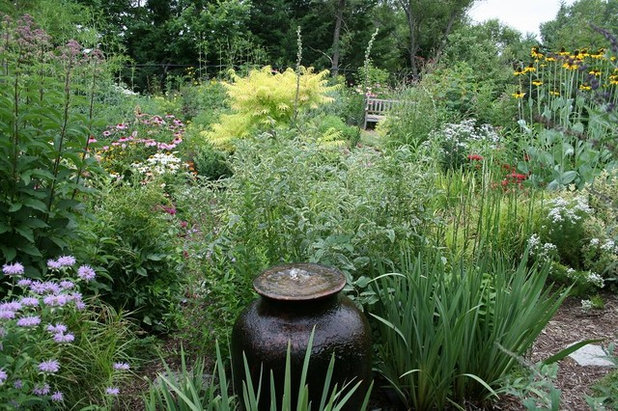
Benjamin Vogt / Monarch Gardens
I remember the first two summers of gardening like I remember my first kiss — it was a sloppy, goopy affair that only made me more curious. I loaded up carts full of perennials and shrubs at local independent nurseries, spending money like I was a rock star — one time almost $1,000. On one trip. That was just irresponsible, but I wanted a garden. Badly.
I bought whatever the nursery had and whatever the plant tag insinuated might work. Little did I know then that plant tags can often fail us and are geared more toward marketing than practical advice. I loaded up with irises for a wet area but have found that few butterflies visit them. My mother — who thankfully forced me to garden as a kid — said I should get as many coral bells as I could, but they burned up in my dry summer clay soil.
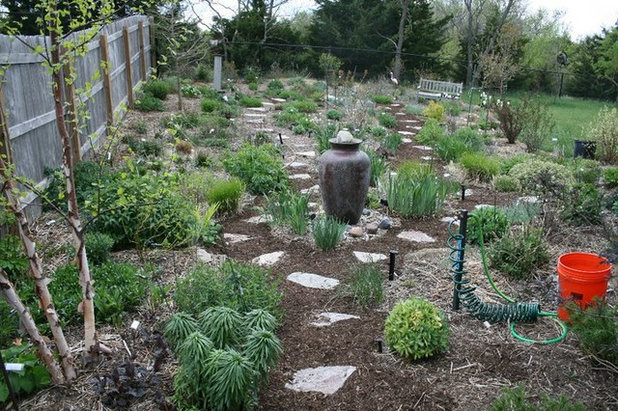
Benjamin Vogt / Monarch Gardens
The plants that thrived were happy accidents: coneflowers, liatris, milkweed, Joe Pye Weed. I knew nothing about them, but once I started doing online research and reading books, I found out they were native to Nebraska. Is this why they seemed to do better than the eye candy I flung into my cart as if they were mint cookies in the grocery store? Once I started gardening more and more with natives, my entire life changed, and not just with issues of less work. My emotional experiences in the garden evolved; I was connected to my home ground in ways I never knew were possible.
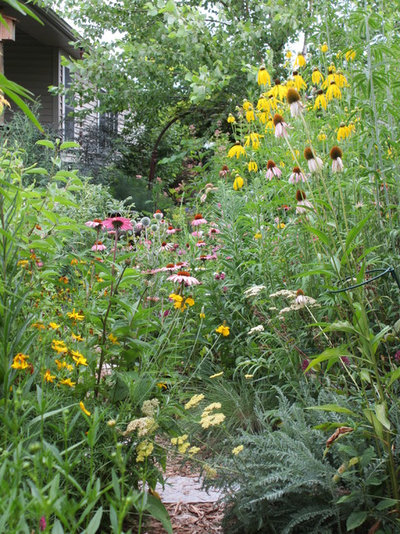
Benjamin Vogt / Monarch Gardens
Here's how natives can change your experience too.
1. Less maintenance. My mom loves roses, but when I thought of her and planted a few, they died. I wasn’t willing to baby them at any stage. I believe in tough-love gardening — in fact, my mom taught me tough love as a parenting strategy (one this mama’s boy sorely needed). If a plant doesn’t take care of itself, I don’t have it in my garden.
As I researched native plants, I found out that if properly sited, they should flourish. And if I accepted that when native plants — for me prairie plants — went through drought, they might slow down, be shorter or bloom less, I could accept not having a "perfect" garden. In fact, not knowing precisely what the garden will look like from year to year makes it more exciting.
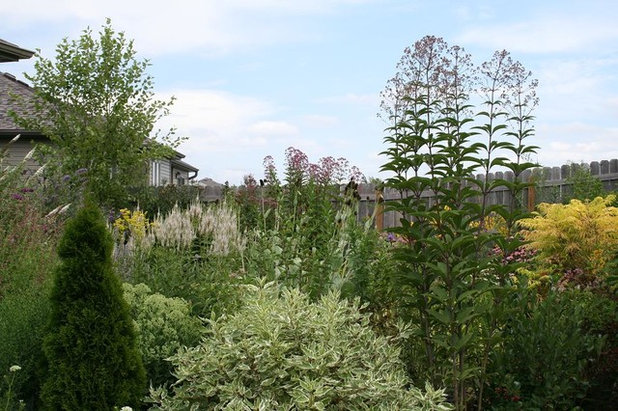
Benjamin Vogt / Monarch Gardens
Liatris, coneflower, rudbeckia, sideoats grama, Indian grass, mountain mint, ironweed, prairie dropseed, aromatic and smooth asters, goldenrod, baptisia, prairie smoke, American senna, coreopsis. These perennials are the tip of the iceberg when it comes to my rich garden palette (there are more than 7,000 native plants in North America). They’re adapted to my climate and clay soil, and properly sited, and I don’t fuss with any of them. I water one or two times a year — usually in the fall, to help them overwinter after a dry August. I cut them down to the ground in mid-March over a long afternoon, using them as free mulch. That’s it. No fertilizing. No pruning. No spraying. I estimate I spend one-quarter of the time “working” in my garden than if I needed to mow. Few people believe me.
The key to low-maintenance gardening is choosing native adapted plants, planting thickly to shade out weeds and using a diversity of forms — these strategies will help create a self-maintaining ecosystem that will bring in beneficial bugs to eat the bad ones. And if you don’t like the “natural” look, that’s OK — native plants can be used in formal settings, in drifts or any way you can imagine. As roots mingle and share information about pests and diseases, the soil information highway creates a mutually beneficial ecology. Soil fertility increases. Water penetration becomes deeper. Weeds get crowded out and starved.
Two places to find out what’s native to you are the Lady Bird Johnson Wildflower Center and The Xerces Society.
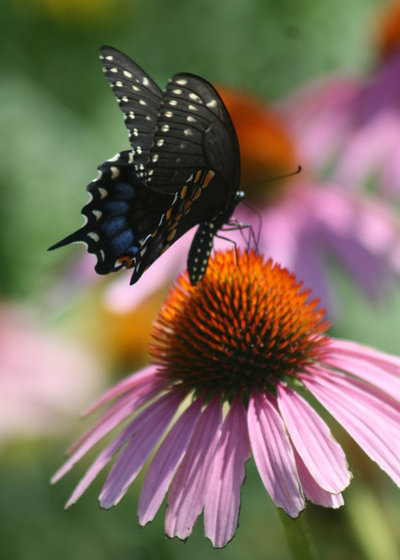
Benjamin Vogt / Monarch Gardens
2. More wildlife. New plants sleep, creep, then leap. That is, the first year they seem to do nothing, the second year they do a little something and then the third year they explode.
After three years my flat moonscape became my interpretation of a prairie. And you know what brought me the most joy, besides the satisfaction of thriving plants and flowers? Butterflies and bees and spiders and frogs and birds all frolicking in my backyard.
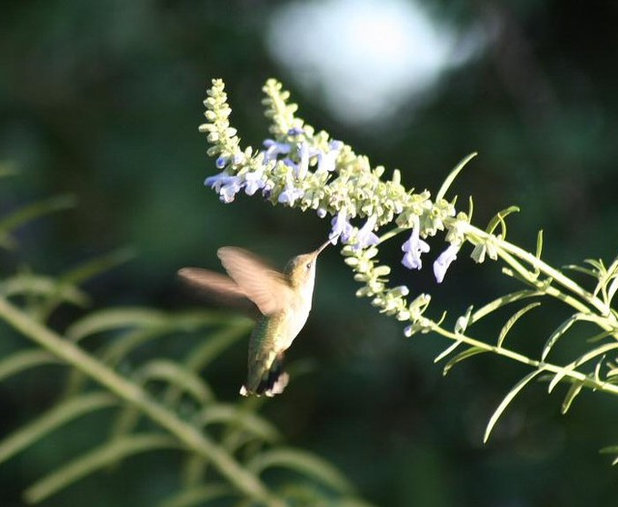
Benjamin Vogt / Monarch Gardens
I think any gardener wants a carefree space filled with beauty, but next on the list is a place attractive to wildlife. Winged creatures are the fourth dimension of a garden, the vertical echo of the beauty below.
At the nursery I bought butterfly bush because of its name. But now, as my native plants have matured, 95 percent of the insects in my garden zoom right by butterfly bush in favor of native blooms, which makes sense — native plants and insects have coevolved.
Certain species of native bumblebees can pollinate only certain species of flowers, because each flower has evolved to produce nectar geared toward attracting one bumblebee. Butterflies of all sorts — skippers, sulphurs, swallowtails, monarchs — make beelines to liatris and Joe Pye Weed and coneflower.
Often those butterflies also lay eggs on native host plants: baptisia for sulphurs, zizia for black swallowtails, milkweed for monarchs. Over the winter viceroys and mourning cloaks hibernate in leaf litter while birds eat seeds; the garden is always in use, even when there's not a flower in sight.
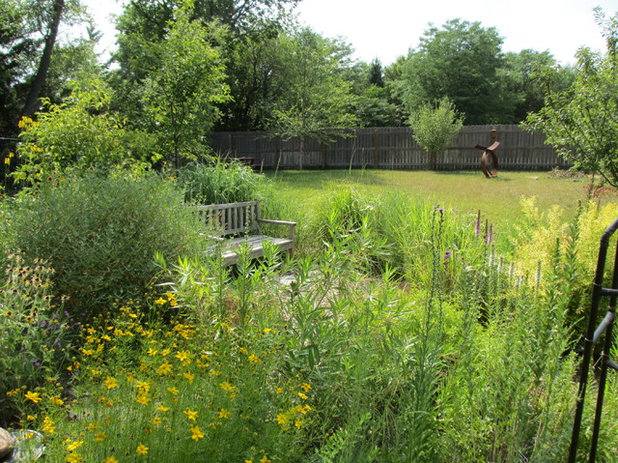
Benjamin Vogt / Monarch Gardens
3. Healthy space for family. A native plant garden means you won’t likely have to fertilize or spray, which means a space welcoming to sensitive insects who, through pollination, are responsible for one in three bites of food we take.
Without insects we would exist in far fewer numbers. But a chemical-free landscape is also safe for kids and pets. A recent USDA study tested 1,000 people for 20 common pesticides and found that the test subjects had an average of 13 pesticides in their system. These pesticides come from the food we eat and the environments we walk in and, in turn, bring into the house.
Using native plants can mitigate and often negate the need for sprays in the landscape, and you’re helping create a wildlife refuge out back.
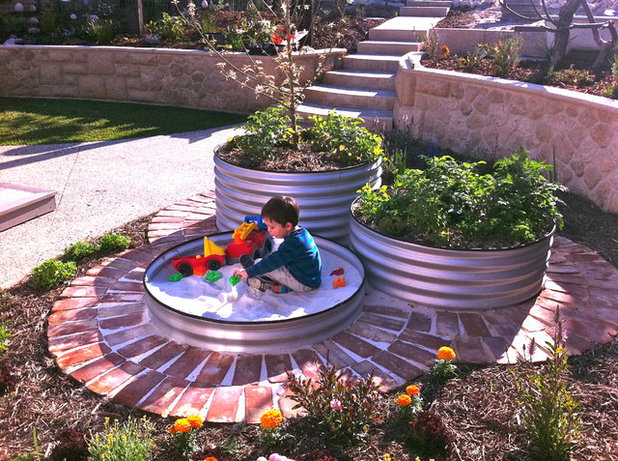
sustainable garden design perth
Since native plants support more wildlife than nonnatives, using them creates a space of wonder and exploration for kids. Exposure to nature has been proven to increase creativity, out-of-the-box thinking and confidence, all while easing symptoms of ADHD. When I was growing up I had more intense relationships with frogs and sticks and dirt than I can remember. Did you know soil contains microscopic organisms that, through contact with our skin, increase levels of serotonin? No wonder I’m happy when I’m digging in the dirt!
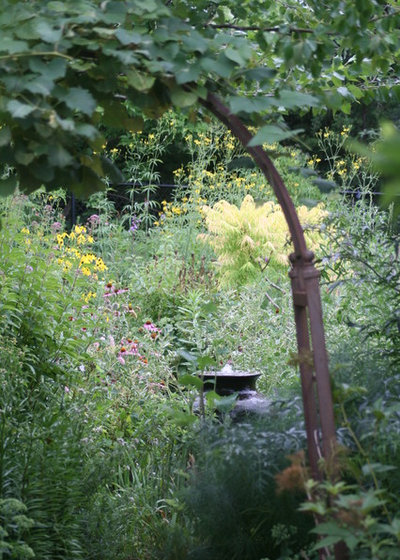
Benjamin Vogt / Monarch Gardens
When I began the garden in 2007, I’d be outside for six hours a day; my wife would wonder what happened to me. While the garden has always been a place for me to work through complex thoughts and emotions in my daily life, it eventually brought my wife and me closer, even if she doesn’t garden like I do.
I remember one day when, walking the garden, she insisted on learning some Latin plant names. After a while it was too much to take in, so she sat on the bench while I putzed around nearby admiring a spider weaving a web.
I could hear my wife muttering the Latin name for Joe Pye Weed,
Eupatorium. “You-pa-tor-eeee-ummmmmmm,” she was saying, having fun drawing out the last syllables. I’d won her over in the garden like I had won her over on our first date.
Together we thrive in our native plant garden, just as the butterflies, bees and birds glide overhead and land on sunflowers and prairie dock, hungry for a place of belonging, a wildlife refuge in suburbia, a place to call home.
Do you grow plants native to your area? Please share your favorites!
More: Planting for birds and butterflies





